State of the Beaches Report: 2018-2019 pittwater's coastal & Estuary overview
2019 a great year for clean beaches
October 6th, 2019: Media Release
Environment Minister Matt Kean was pleased to release the annual State of the Beaches report which has returned great results for beaches across the NSW.
Minister Kean said 2019 is one of the cleanest years of recreational water quality on record since monitoring began in 1989.
“Clean beaches are great news for the community and encourage more people to get out and about as we head into the start of the swimming season,” Mr Kean said.
“This year, 86 per cent of the State’s swimming sites are rated ‘very good’ or ‘good’ which is a significant achievement and great news as we head into beach season.
“Estuarine swimming sites have never been this clean, with a record breaking 82 per cent listed as ‘very good’ or ‘good’.
“This is in addition to the 98 per cent of ocean beaches shown to be clean and safe, as were four of the five ocean baths.”
Mr Kean said that while these figures are welcome, they also show there is still work to do.
According to the report, coastal lakes, lagoons and estuarine swimming spots were adversely affected by heavy rain, with the number of clean lake and lagoon swimming sites declining.
Lower levels of flushing in coastal lakes, lagoons and estuaries means these swimming sites take longer to recover from stormwater events.
The NSW Government committed $500,000 to address water quality at Terrigal Beach and surrounding lagoons, and $200,000 to establish an expert panel to determine the best way to improve water quality in Tuggerah Lakes.
“Terrigal Beach has already shown signs of improvement, having been upgraded to good, from a poor grade last year, which clearly demonstrates the NSW Government’s commitment to improving the environment,” Mr Kean said.
State of the beaches 2018–19 regional reports
Beachwatch report cards 2018–19
A report card is a 2-page summary for each region.
Pittwater Beaches
From State of the beaches 2018-2019: Sydney region- © State of New South Wales and Department of Planning, Industry and Environment 2019
Ocean beaches
All ocean beaches were graded as Very Good or Good.
Palm, Whale, Avalon, Bilgola, Newport, Bungan, and Mona Vale beaches were graded as Very Good. The water quality at these sites was of a very high standard and suitable for swimming almost all of the time.
Warriewood, Turimetta and North Narrabeen beaches were graded as Good. Water quality was suitable for swimming during dry weather conditions, but swimming should be avoided during and for up to one day following heavy rainfall.
Estuarine beaches
The Basin and Great Mackerel Beach were graded as Very Good, a similar result to previous years. These sites had excellent water quality and were suitable for swimming almost all of the time.
Barrenjoey Beach, Paradise Beach Baths, Clareville Beach, Taylors Point Baths, Bayview Baths, Elvina Bay, North Scotland Island and South Scotland Island were graded as Good. Water quality at these sites was suitable for swimming most of the time, with elevated levels of enterococci mostly recorded following rainfall.
While Bayview Baths and Barrenjoey Beach continued to be graded Good this year, elevated enterococci levels were occasionally recorded during dry weather conditions. Water quality at these sites can take longer to recover from stormwater events than other Pittwater swimming sites due to lower levels of flushing.
Lake/lagoon swimming sites
Birdwood Park in Narrabeen Lagoon was graded as Good, a similar result to the previous year. While the microbial water quality has increased slightly from the previous year, water quality was of a good standard with 89% of dry weather samples suitable for swimming. This site is located at the entrance to the lagoon and water quality at this site is influenced by wet weather events and whether the lagoon is open to the ocean. Discharge from Narrabeen Lagoon is a significant source of faecal contamination.
Bilarong Reserve in Narrabeen Lagoon was downgraded to Poor in 2018–2019 from Good in the previous year. While water quality is susceptible to pollution during and following rainfall at this site, water quality during dry weather was suitable for swimming 87% of the time. The swimming site retains pollution inputs because it is located away from the lagoon entrance and is not well flushed by clean ocean water. A significant source of faecal contamination is from stormwater runoff to the lagoon.
Water quality at Birdwood Park and Bilarong Reserve lagoon sites has declined from the previous year. During the assessment period, Narrabeen Lagoon has closed naturally for extended periods and been mechanically opened by council on several occasions. While the entrance to the lagoon remains closed, water quality is likely to decline as pollution inputs are not as readily dissipated or flushed.
Between September and December 2018, council undertook large scale clearance works, with the lagoon entrance anticipated to remain open for some time. This will allow the lagoon to be well flushed by clean ocean water.
Management
Under the NSW Government’s Coastal and Estuary Grants Program, funding has been given to relevant councils (including Northern Beaches Council) to prepare the first stage of the Hawkesbury River System Coastal Management Program (CMP), the scoping study. The development of a CMP will allow councils to identify catchment pressures in the system, including Pittwater, and prioritise management initiatives to manage issues relating to coastal and estuary health. Water quality management actions such as stormwater infrastructure improvements, restoring and maintaining riparian areas and strategic land-use planning will be considered during the process.
The NSW National Parks and Wildlife Service has decommissioned septic systems and installed a number of sewer pumping stations to service Barrenjoey Head, located at the northern end of Barrenjoey Beach (Station Beach). The lighthouse and Fisherman’s Cottages were decommissioned in July 2016, and Boatman’s Cottage in November 2016. Final connection of the Barrenjoey Head sewer system to the reticulated sewerage system should be completed by late 2019.
The Council proactively inspects and cleans out 242 stormwater quality improvement devices. Work is continuing to standardise measurement of gross pollutants and debris and improve data management across the amalgamated council. During 2018–2019, a new gross pollutant trap was constructed, six end-of-pipe trash nets were replaced, and other minor renewal works were completed in the local government area.
Two major sediment removal projects took place in 2018–2019, removing thousands of tonnes of sediment from Burnt Bridge Creek, which feeds into Manly Lagoon and Queenscliff Beach, and at South Creek, which leads to Narrabeen Lagoon. Removal of excess sediment is important, as high sediment loads can cloud waterways, affecting vegetation and fish health. Sediment can also carry pollutants such as faecal bacteria, toxins and nutrients that encourage algal growth.
The Council and Sydney Water collaborated in 2016–2017 to assess dry and wet weather stormwater quality around Bayview Baths, Bayview. The area was found to be impacted by diffuse stormwater pollution, and therefore swimming at Bayview Baths should be avoided for at least three days after heavy rain.
Water sensitive urban design has been implemented across the local government area and particularly in the Warriewood land release area, where it improves water quality prior to discharge into Narrabeen Lagoon.
A large baseline water quality monitoring program has been completed in the creeks in and around Ingleside in preparation for future development in the area. This will help Council respond to sources of pollution during any future construction activities and will inform catchment planning for Narrabeen Lagoon and Pittwater.
The Council has also completed a water quality study in the Nareen Creek, located in the Narrabeen Lagoon catchment, which will be used for targeted education in the catchment. Sources of sediment were identified, with a number of areas added to the future program for rectification and rehabilitation works.
In late 2018, the Council cleared the entrance of Narrabeen Lagoon to reduce flood risk, using the sand to replenish sand lost from Collaroy–Narrabeen Beach. This lagoon entrance is usually cleared about every four years or when required to prevent flooding to nearby properties.
Sydney Water has inspected, cleaned and repaired sewer mains that have a high likelihood of discharging sewage to waterways if they become blocked. When significant tree root intrusion to the public sewer from the private sewer was identified, property owners were requested to remedy the problem.
Beach by Beach
Estuarine Beaches
Barrenjoey Beach (Station Beach)
Rated: Good
Barrenjoey Beach is approximately 1.5 kilometres long and located on the north-eastern foreshore of Pittwater.
The Beach Suitability Grade of Good indicates microbial water quality is suitable for swimming most of the time but may be susceptible to pollution after rain, with several potential sources of faecal contamination.
Enterococci levels increased slightly with increasing rainfall, occasionally exceeding the safe swimming limit after little or no rain.
The site has been monitored since 1996. Since 2014 samples are collected either from the shoreline or boat depending on access to the site.

Paradise Beach Baths
Rated: Good
Paradise Beach Baths is a 30 by 20 metre netted swimming enclosure on the eastern foreshore of Pittwater.
The Beach Suitability Grade of Good indicates microbial water quality is suitable for swimming most of the time but may be susceptible to pollution after rain, with several potential sources of faecal contamination including stormwater.
Enterococci levels increased with increasing rainfall, often exceeding the safe swimming limit in response to 10mm or more of rainfall.
The site has been monitored since 1996.

Clareville Beach
Rated: Good
Clareville Beach is a narrow 250 metre long beach located on the eastern foreshore of Pittwater.
The Beach Suitability Grade of Good indicates microbial water quality is suitable for swimming most of the time but may be susceptible to pollution after rain, with several potential sources of faecal
contamination including stormwater.
Enterococci levels generally increased with increasing rainfall, often exceeding the safe swimming limit after 5mm or more of rain, and regularly after 20mm or more of rainfall.
The site has been monitored since 1995.

Taylors Point Baths
Rated: Good
Taylors Point Baths is a 15 by 20 metre netted swimming enclosure on the eastern foreshore of Pittwater.
The Beach Suitability Grade of Good indicates microbial water quality is suitable for swimming most of the time but may be susceptible to pollution after rain, with several potential sources of faecal contamination including stormwater.
Enterococci levels generally increased with increasing rainfall, occasionally exceeding the safe swimming limit after 5mm or more of rain, and regularly after 20mm or more of rainfall.
The site has been monitored since 2010.

Bayview Baths
Rated: Good
Bayview Baths is a 20 by 40 metre swimming enclosure on the southern foreshore of Pittwater.
The Beach Suitability Grade of Good indicates microbial water quality is suitable for swimming most of the time but may be susceptible to pollution after rain, with several potential sources of faecal contamination including stormwater and sewage overflows.
Enterococci levels increased with increasing rainfall, occasionally exceeding the safe swimming limit after little or no rain, and often after 10mm or more of rainfall.
The site has been monitored since 1995.

Elvina Bay
Rated: Good
Elvina Bay is located on the south-western foreshore of Pittwater. The swimming area is not netted.
The Beach Suitability Grade of Good indicates microbial water quality is suitable for swimming most of the time but may be susceptible to pollution after rain, with several potential sources of minor faecal contamination.
Enterococci levels generally increased with increasing rainfall, occasionally exceeding the safe swimming limit after 10mm or more of rain, and regularly after 20mm or more of rainfall.
The site has been monitored since 1995.

North Scotland Island
Rated: Good
The North Scotland Island swimming site is a 15 by 50 metre netted enclosure located on the north side of Scotland Island in Pittwater.
The Beach Suitability Grade of Good indicates microbial water quality is suitable for swimming most of the time but may be susceptible to pollution after rain, with several potential sources of faecal contamination including onsite systems.
Enterococci levels generally increased with increasing rainfall, occasionally exceeding the safe swimming limit after 10mm or more of rain, and often after 20mm or more of rainfall.
The site has been monitored since 1995.

South Scotland Island
Rated: Good
The South Scotland Island swimming site is located at Carols Wharf on the southern side of Scotland Island. The location is not netted and is backed by a reserve.
The Beach Suitability Grade of Good indicates microbial water quality is suitable for swimming most of the time but may be susceptible to pollution after rain, with several potential sources of faecal contamination including onsite systems.
Enterococci levels generally increased with increasing rainfall, occasionally exceeding the safe swimming limit after 10mm or more of rain, and regularly after 20mm or more of rainfall.
The site has been monitored since 1996.
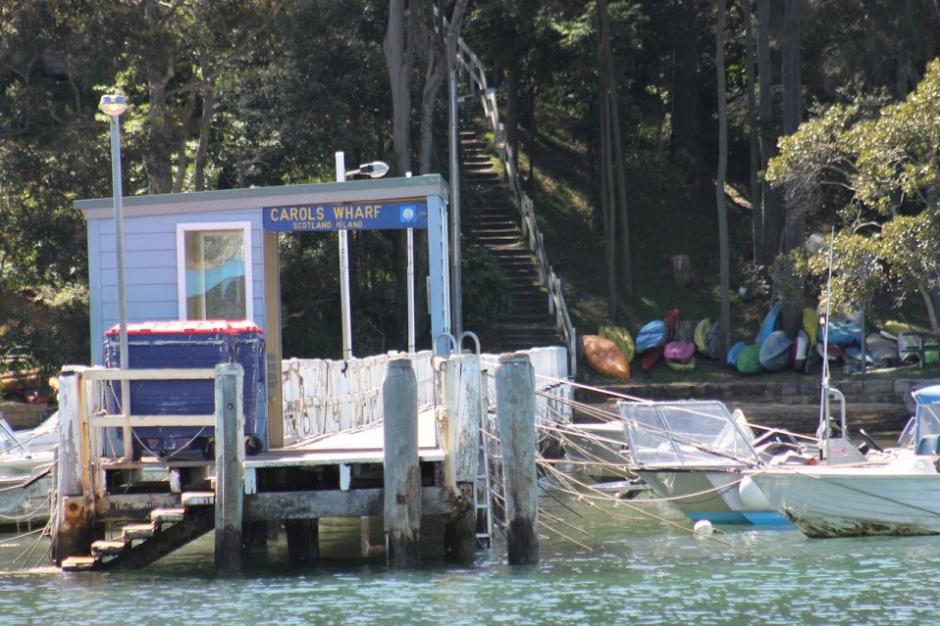
The Basin
Rated: Very Good
The Basin is a 500 metre sandy beach on the western side of Pittwater, backed by Ku-ring-gai Chase National Park.
The Beach Suitability Grade of Very Good indicates microbial water quality is considered suitable for swimming almost all of the time with few potential sources of significant faecal contamination.
Enterococci levels increased slightly with increasing rainfall, occasionally exceeding the safe swimming limit in response to 10mm or more of rainfall.
The site has been monitored since 1999.
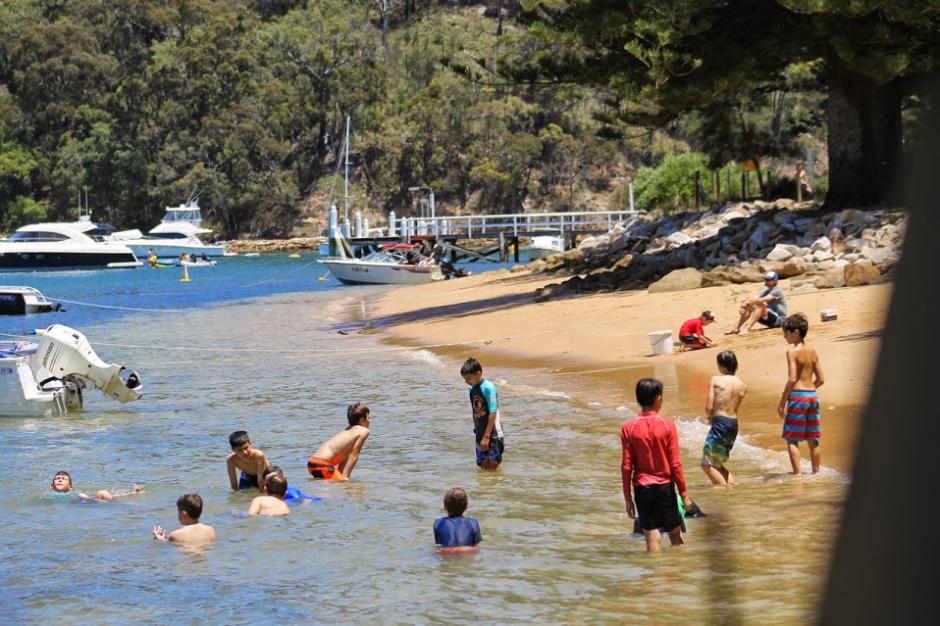
Great Mackerel Beach
Rated: Very Good
Great Mackerel Beach is a 500 metre long sandy beach on the north-western side of Pittwater.
The Beach Suitability Grade of Very Good indicates microbial water quality is considered suitable for swimming almost all of the time with few potential sources of significant faecal contamination.
Enterococci levels increased slightly with increasing rainfall, occasionally exceeding the safe swimming limit in response to 10mm or more of rainfall.
The site has been monitored since 1999.
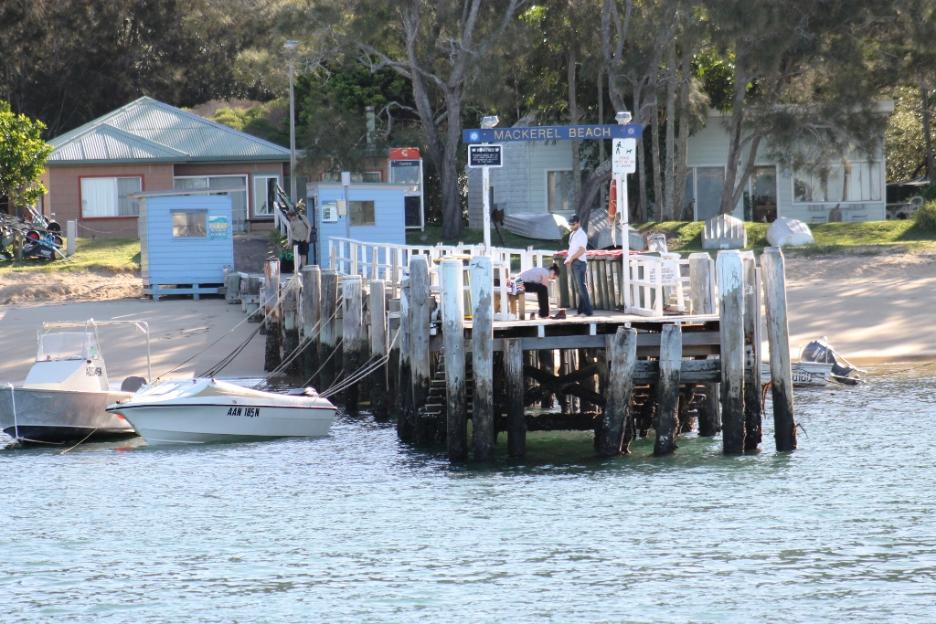
Coastal Beaches
Palm Beach
Rated: Very Good
Palm Beach is 2.3 kilometres long, with rock baths in the southern corner. Lifeguards patrol the beach from September to April.
The Beach Suitability Grade of Very Good indicates microbial water quality is considered suitable for swimming almost all of the time, with few potential sources of faecal contamination.
Enterococci levels increased slightly with increasing rainfall, occasionally exceeding the swimming limit after 5mm or more of rainfall.
The site has been monitored since 1989.
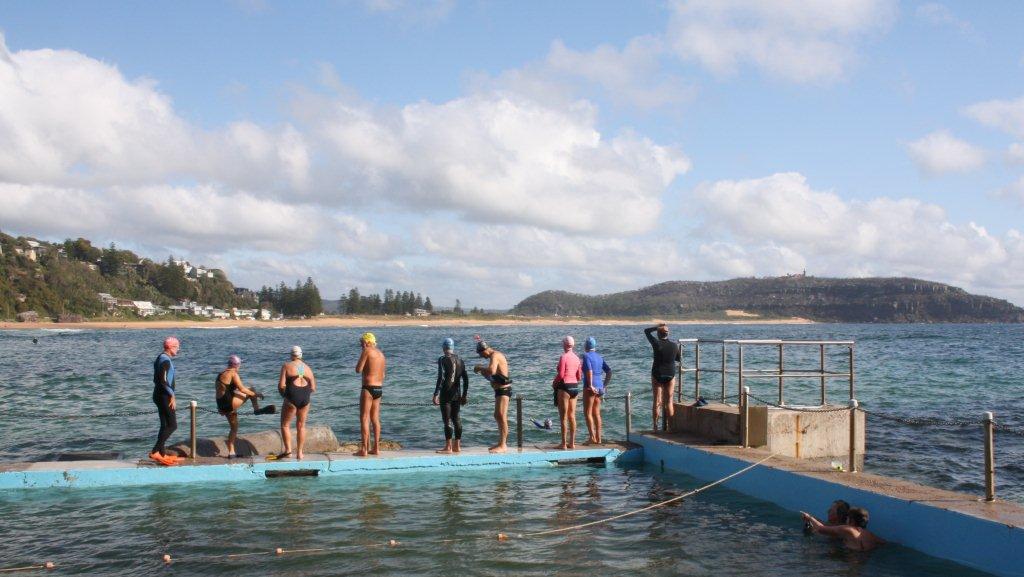
Whale Beach
Rated: Very Good
Whale Beach is 600 metres long, with rock baths at the southern rock platform. Lifeguards patrol the beach from September to April.
The Beach Suitability Grade of Very Good indicates microbial water quality is considered suitable for swimming almost all of the time, with few potential
sources of faecal contamination. Enterococci levels increased slightly with increasing rainfall, but usually remained below the safe swimming limit across all rainfall categories.
The site has been monitored since 1989.
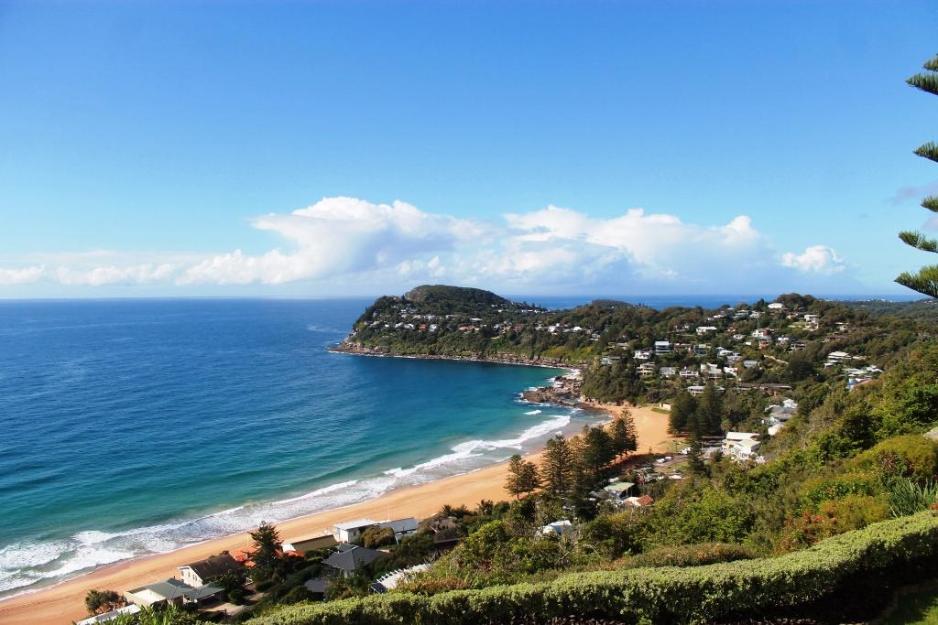
Avalon Beach
Rated: Very Good
Avalon Beach is 500 metres long and backed by a park and picnic area. Lifeguards patrol the beach from September to April.
The Beach Suitability Grade of Very Good indicates microbial water quality is considered suitable for swimming almost all of the time, with few potential sources of faecal contamination.
Enterococci levels increased slightly with increasing rainfall, occasionally exceeding the safe swimming in response to 5mm or more of rainfall.
The site has been monitored since 1989.
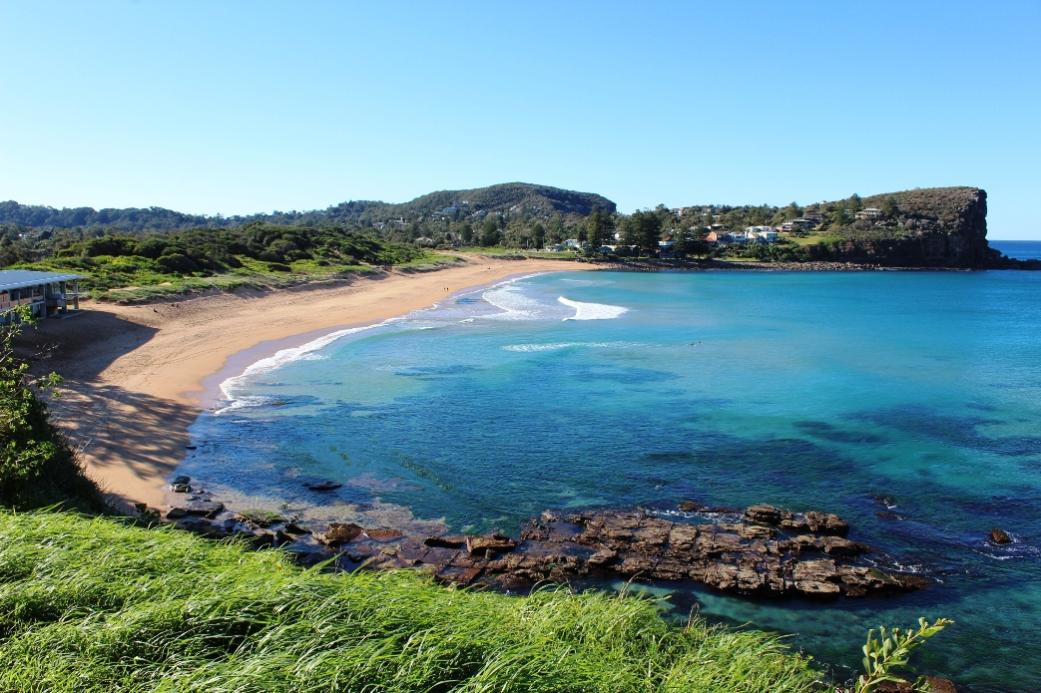
Bilgola Beach
Rated: Very Good
Bilgola Beach is 500 metres long, with rock baths located at the southern end. Lifeguards patrol the beach from September to April.
The Beach Suitability Grade of Very Good indicates microbial water quality is considered suitable for swimming almost all of the time, with few potential sources of faecal contamination.
Enterococci levels generally increased with increasing rainfall, occasionally exceeding the safe swimming limit after 5mm or more of rain, and regularly after 20mm or more of rainfall.
The site has been monitored since 1989.
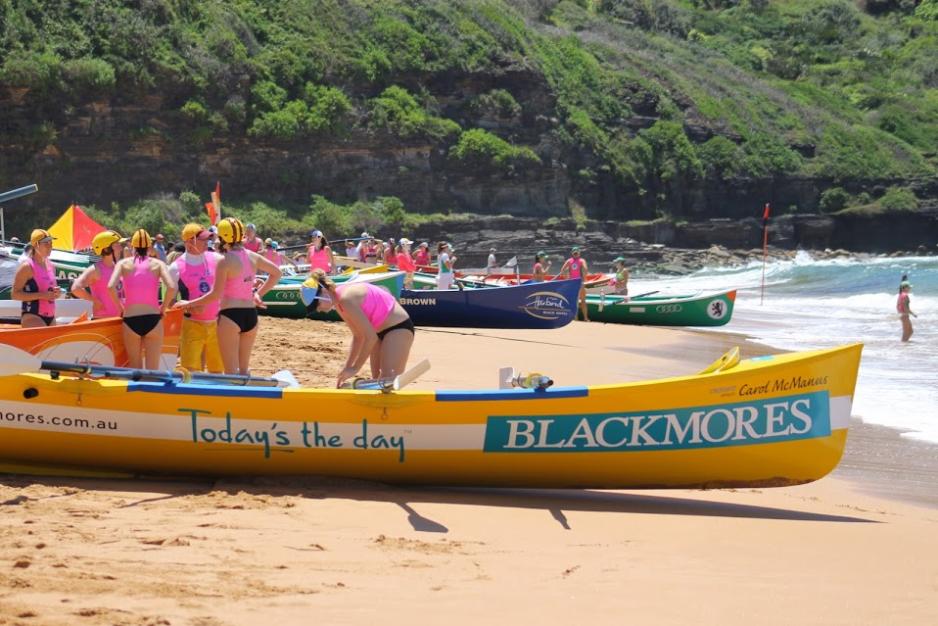
Newport Beach
Rated: Very Good
Newport Beach is an open, east facing beach around 1.3 kilometres long. Lifeguards patrol the beach from September to April.
The Beach Suitability Grade of Very Good indicates microbial water quality is considered suitable for swimming almost all of the time, with few potential sources of significant faecal contamination.
Enterococci levels generally increased with increasing rainfall, occasionally exceeding the safe swimming limit after light rain, and often after 20mm or more of rainfall.
The site has been monitored since 1989.
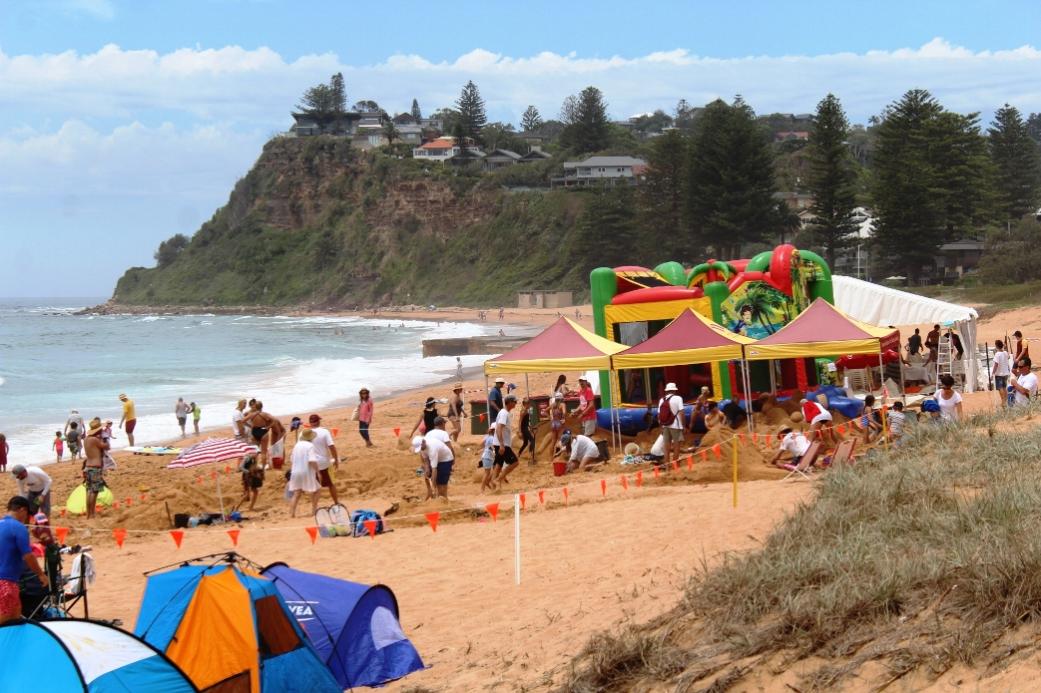
Bungan Beach
Rated: Very Good
Bungan Beach is 600 metres long and backed by a steep escarpment. Lifeguards patrol the beach from late December to the end of January.
The Beach Suitability Grade of Very Good indicates microbial water quality is considered suitable for swimming almost all of the time, with few potential sources of significant faecal contamination.
Enterococci levels increased slightly with increasing rainfall, often exceeding the safe swimming limit in response to 20mm or more of rainfall.
The site has been monitored since 1989.
Mona Vale Beach
Rated: Very Good
Mona Vale Beach is one kilometre long. Lifeguards patrol the beach from September to April.
The Beach Suitability Grade of Very Good indicates microbial water quality is considered suitable for swimming almost all of the time, with few potential sources of significant faecal contamination.
Enterococci levels increased slightly with increasing rainfall, occasionally exceeding the safe swimming limit after light rain, and often after 20mm or more of rainfall.
The site has been monitored since 1989.
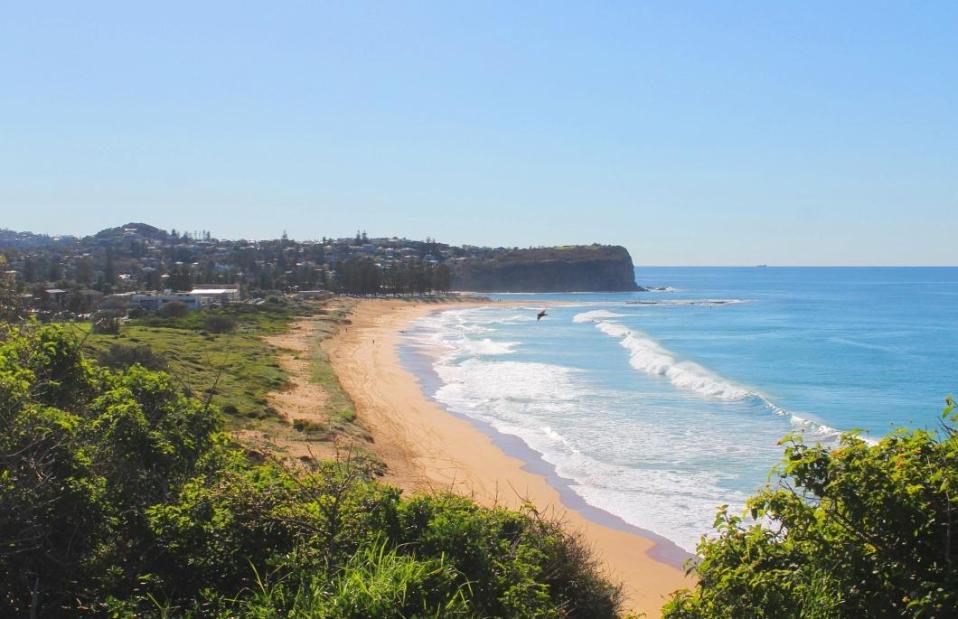
Warriewood Beach
Rated: Good
Warriewood Beach is 500 metres long and located below a steep bluff. The beach is patrolled during holiday periods.
The Beach Suitability Grade of Good indicates microbial water quality is suitable for swimming most of the time but can be susceptible to pollution after rain, with several potential sources of faecal ontamination including Warriewood Wastewater Treatment Plant (WWTP).
Enterococci levels increased slightly with increasing rainfall, occasionally exceeding the safe swimming limit after 20mm or more of rainfall.
The site has been monitored since 1989.
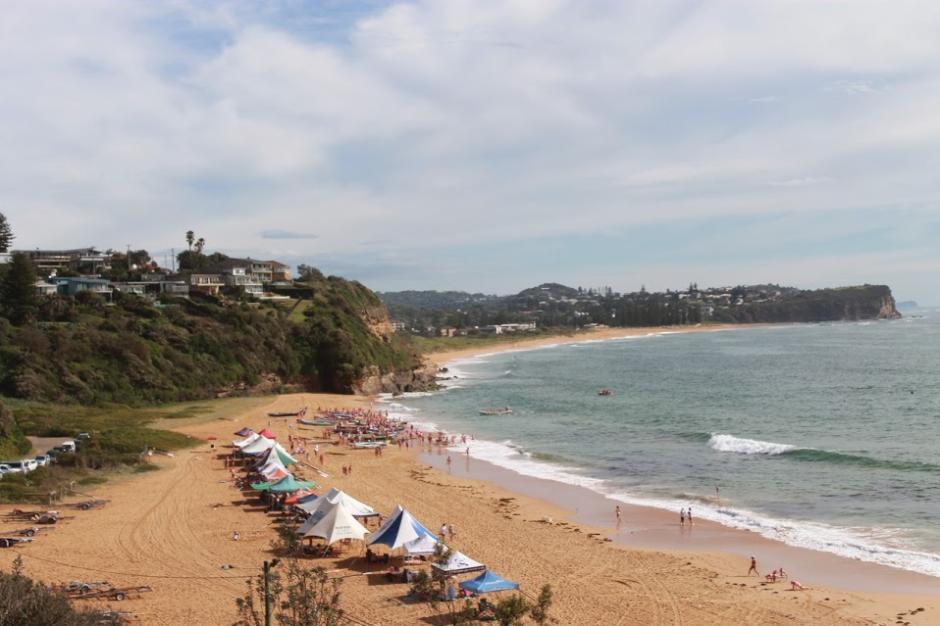
Turimetta Beach
Rated: Good
Turimetta Beach is 350 metres long and is backed by steep bluffs. This beach is not patrolled by lifeguards.
The Beach Suitability Grade of Good indicates microbial water quality is suitable for swimming most of the time but may be susceptible to pollution after rain, with several potential sources of faecal contamination including Warriewood WWTP.
Enterococci levels increased slightly with increasing rainfall, occasionally exceeding the safe swimming limit after 20mm or more of rainfall.
The site has been monitored since 1994.
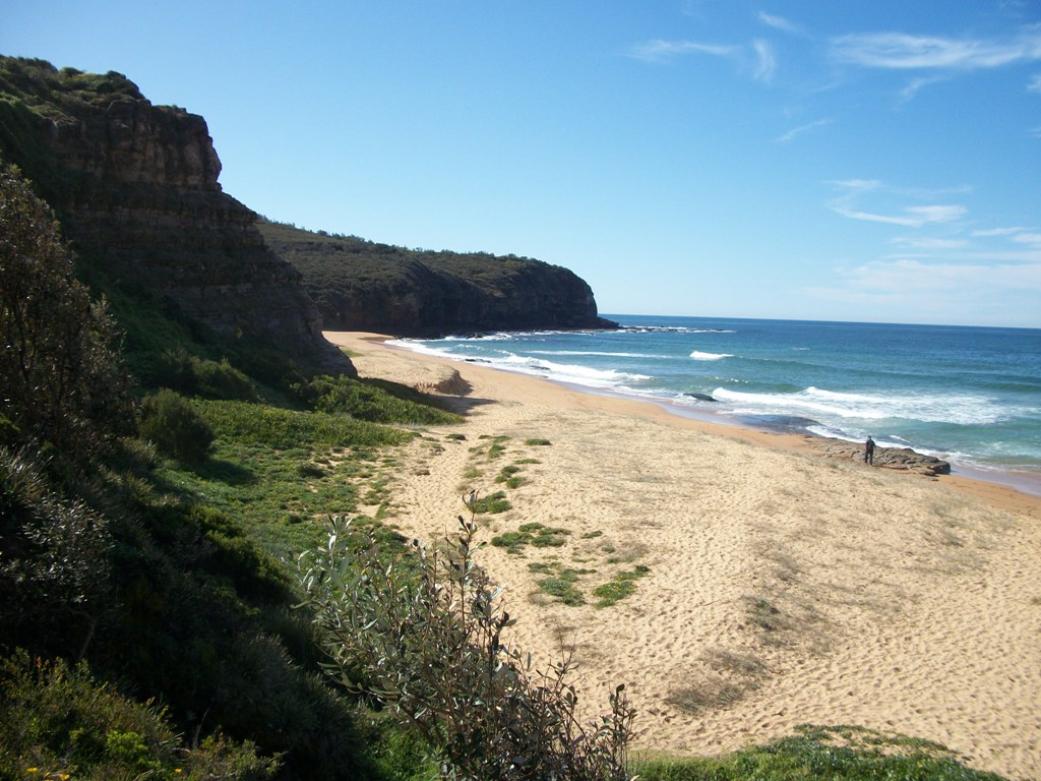
North Narrabeen Beach
Rated: Good
North Narrabeen Beach is located at the northern end of the 3.5 kilometre-long beach and is patrolled from September to April.
The Beach Suitability Grade of Good indicates microbial water quality is suitable for swimming most of the time but may be susceptible to pollution after rain, with several potential sources of faecal contamination including discharge from Narrabeen Lagoon.
Enterococci levels increased with increasing rainfall, occasionally exceeding the safe swimming limit in response to 5mm or more of rain, and often after 10mm or more of rainfall.
The site has been monitored since 1989.
Narrabeen Lagoon
(Birdwood Park)
Rated: Good
The Birdwood Park swimming site is a sandy beach located on the southern side of the entrance to Narrabeen Lagoon. The lagoon entrance has been periodically open and closed at times.
The Beach Suitability Grade of Good indicates microbial water quality is suitable for swimming most of the time but can be susceptible to pollution after rain, with several potential sources of faecal contamination including the lagoon itself.
Enterococci levels increased with increasing rainfall, occasionally exceeding the safe swimming limit after little or no rain, and regularly after 5mm or more of rain.
The site has been monitored since 2004.
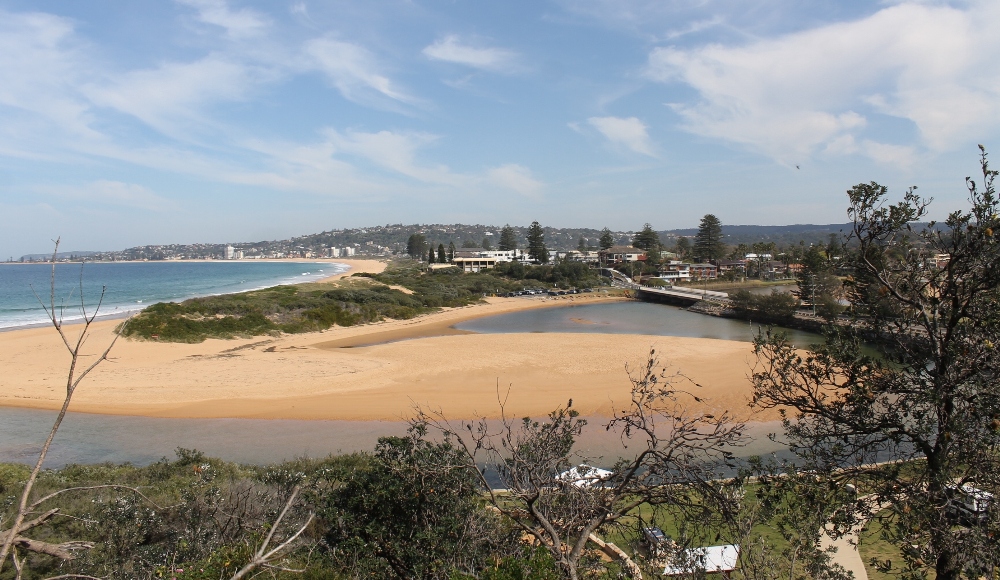
Bilarong Reserve
Rated: Poor
Bilarong Reserve is located on the northern shoreline of Narrabeen Lagoon.
The Beach Suitability Grade of Poor indicates microbial water quality is susceptible to faecal pollution, particularly after rainfall and occasionally during dry weather conditions, with potential faecal contamination including the lagoon itself.
Enterococci levels generally increased with increasing rainfall, occasionally exceeding the safe swimming limit in response to little or no rain, and regularly after 5mm or more of rainfall.
The site has been monitored since 2014.
